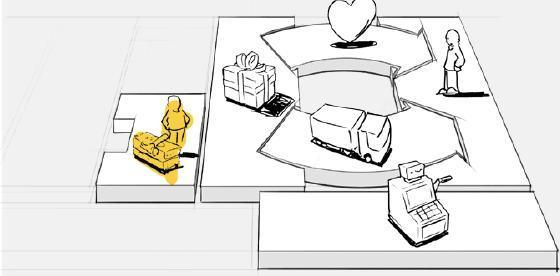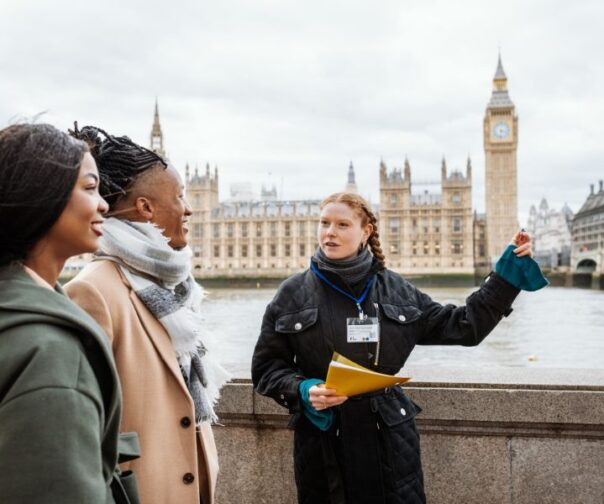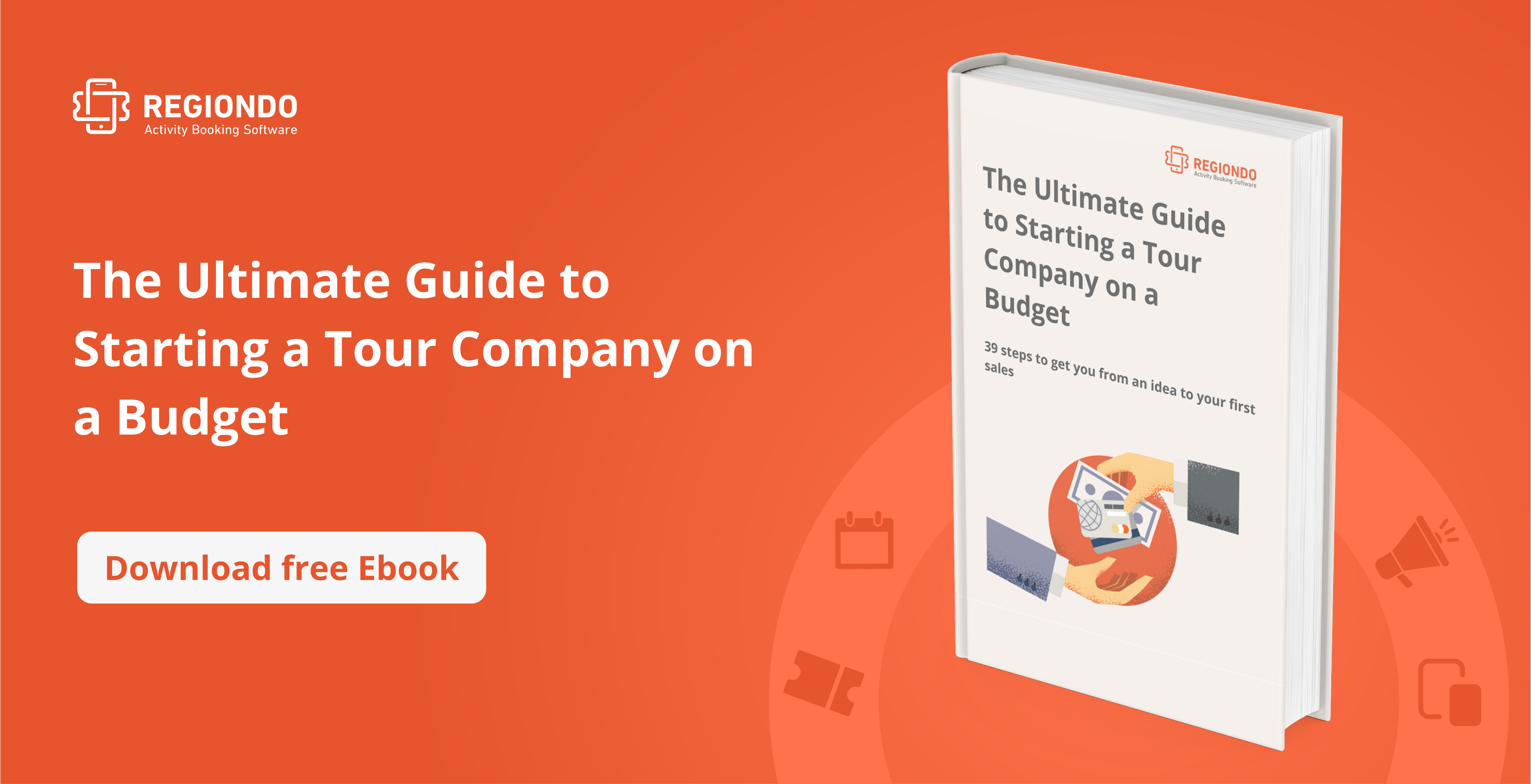How did you realize you have a passion for educating and providing people with rich cultural experiences? Or that you simply love a specific activity and want to share the experience with others? However you made that realization, you’re here, ready to take the next step to creating a viable and successful tour operator business.
The truth is that being a tour operator is not just about providing new and exciting experiences for tourists. There’s way more to it than that. Just like any other venture, there are lots of pieces that need to come together before you achieve any kind of success.
A major part of that puzzle is putting together a well thought out business model and plan.
That’s why you’re reading this article. It is your guide to understanding the tour operator business model and how to create your own. It will also help you to focus on tasks that will have the most business impact.
Let’s get to it!
The 3 elements to form a successful tour operator business model
The tour operator business model consists of three key elements: your tour and activity selection, your market, and your money making plan.
Tour and activity selection: What are you selling? What makes it unique/what’s your unique selling proposition (USP)? What resources do you need to get started?
Your market: Who are you selling your products or services to? Which category of traveler/tourist are your services for? Who are your competitors?
Money making plan: How will you make money? How will you market your trips and activities?
Addressing those three main points in a document or spreadsheet is the first step to creating a viable tour operator business model.
Next? Set goals.
Setting goals and objectives for your tour operator company
This part is extremely important in several ways. The first one being that envisioning how your business will look 5 years down the line gives you some more perspective of what you need to do to get there.
So think about what it will look like. How many customers will book your tour per week? How many activities can you handle per week?
Answer questions of that nature and you’ll be able to come up with at least 10 objectives and steps that you need to take to get there.
Some examples of goals and steps you may come up with:
- Expand your tour activity selection. In order to do so, you need to find gaps in the market that you can meet with your resources and experience.
- Reach a new market segment. That requires that you perhaps partner with other travel agents and activity providers.
- Further streamline your booking experience. That requires that you activate online bookings with tools like Regiondo.
Setting clear, well-defined goals can also help your business grow; and improve teamwork and collaboration (when everyone on your team understands the direction your business is headed, they’ll have more clarity and purpose in their work to get you there.)
And remember that setting goals is an ongoing process in any business.
The Value Proposition: Why would anyone buy your tour?
Your business’ value proposition is arguably the most important element of your overall marketing message. It is the part where you define how you’re creating value for your prospective customers.
To be a bit more technical: Your value proposition is a clear and concise articulation of why customers should choose your tours or activities over your competitors.
So what goes into creating a clear and concise value proposition?
- State your vision for the business
- What value does your product or service provide to the customer?
- Why are you qualified to offer that value offering?
- What is unique about your product or service?
- What is the growth potential for your product or service?
The aim of writing down your value proposition is that it makes it easier for customers and potential investors to evaluate your offering — from a market and financial perspective. In fact, every single item on your business model or plan has to relate back to your value proposition.
Key resources you’ll need to deliver your USP
What do we mean by that? Simply put, your key resources are the main resources your company uses to create your USP and to provide your tour or activity offerings. They are the most important things to have for your tour operator business model to work.

Credit: Strategyzer
So think about a few things:
- What are the main assets your company needs to put on tours and activities?
- What key resources does your tour require?
- Which resources are most important in all your distribution channels?
- What does the operational end of your business look like? For example, what kinds of materials do you need? What equipment will you need? What types of people will you employ?
The key resources section plays a vital role in bringing your vision and value proposition to life. It highlights what you need in order to deliver the value your customers expect from you.
Sorting out your finances
You’re really excited to get your new business model up and running— we get it. But remember that a successful tour operator business needs to make economic sense.
So, you need to ask yourself some financial questions, which include:
- What’s the initial investment of capital that my tour operation company will need?
- When will I start making profit?
- What will my profit statements look like in 6 months? A year?
- What income can I take home?
- Will I be able to dedicate enough, finance-wise?
- What is the likelihood of the business failing?
- What if it does (fail)?
Those questions are vital to accurately gauging your ability to develop a successful tour operator business model.
Establishing your revenue streams
Perhaps the most critical component of any sustainable tour operator business model? A positive cash-flow.
You need to figure out your revenue streams from the get-go. To help you fine-tune them, here are some questions you should ask yourself:
- What are your primary and secondary revenue streams?
- What value are your customers willing to pay for?
- How would they prefer to pay?
- How much does every revenue stream add to overall revenues?
Defining your customer relationships
Customer relationships refer to the way you interact with new and existing customer segments. Once you know their communication and purchasing preferences, you can adequately build a system to attract customers, get repeat business and more referrals.
Here are some key questions to think about when mapping out your customer relationships:
- What does your target audience expect from you?
- Can you integrate that into your business (cost and format-wise)?
Those two questions will further inform your USP, finances, and other strategies.
Pulling everything together into your marketing strategy
You need a marketing strategy that is solely designed for your target market and customers. There are so many niches in the tour operator industry which also means that there are so many different marketing plans that are particularly favorable to specific niches.
You need to create a marketing plan that is tailored to your niche.
So, ponder the following:
- What is my customer persona? Meaning, who are they? How old are they? What do they do for a living? Where are they from? What do they want from your tour or activity?
- Where do you find your ideal customer? For example, are they heavy social media users? If so, which channels are they active on?
- What are their purchasing personas? Meaning, is it a segment that purchases online? Do they prefer sending through a check or buying in person?
You can then do your research to create an effective marketing strategy that your customer segments will buy into.
Let’s give you potential strategies you can incorporate into your overall marketing strategy:
- Add a blog to your website to substantially boost your search engine optimization (SEO) efforts.
- Cultivate your social media presence.
- Run campaigns that make sense for your customer segment. For example, if your target market is millennials looking for the ultimate holiday experience, then social media should be your priority over print advertising.
Wrapping up
Building a tour operator business from scratch is not easy. There are many pieces of the puzzle you have to put together: from choosing your niche, to building relationships, to conducting thorough market research, to building your brand and online presence, etc.
However, creating the right business model will give you a clear roadmap to guide your business journey. Use this article as a guide to creating a viable tour operator business model.
You might also like:


![19 Steps for a Successful Reopening of Your Experience Business [Free Checklist]](https://pro.regiondo.com/wp-content/uploads/2020/05/checklist-392x256.png)


